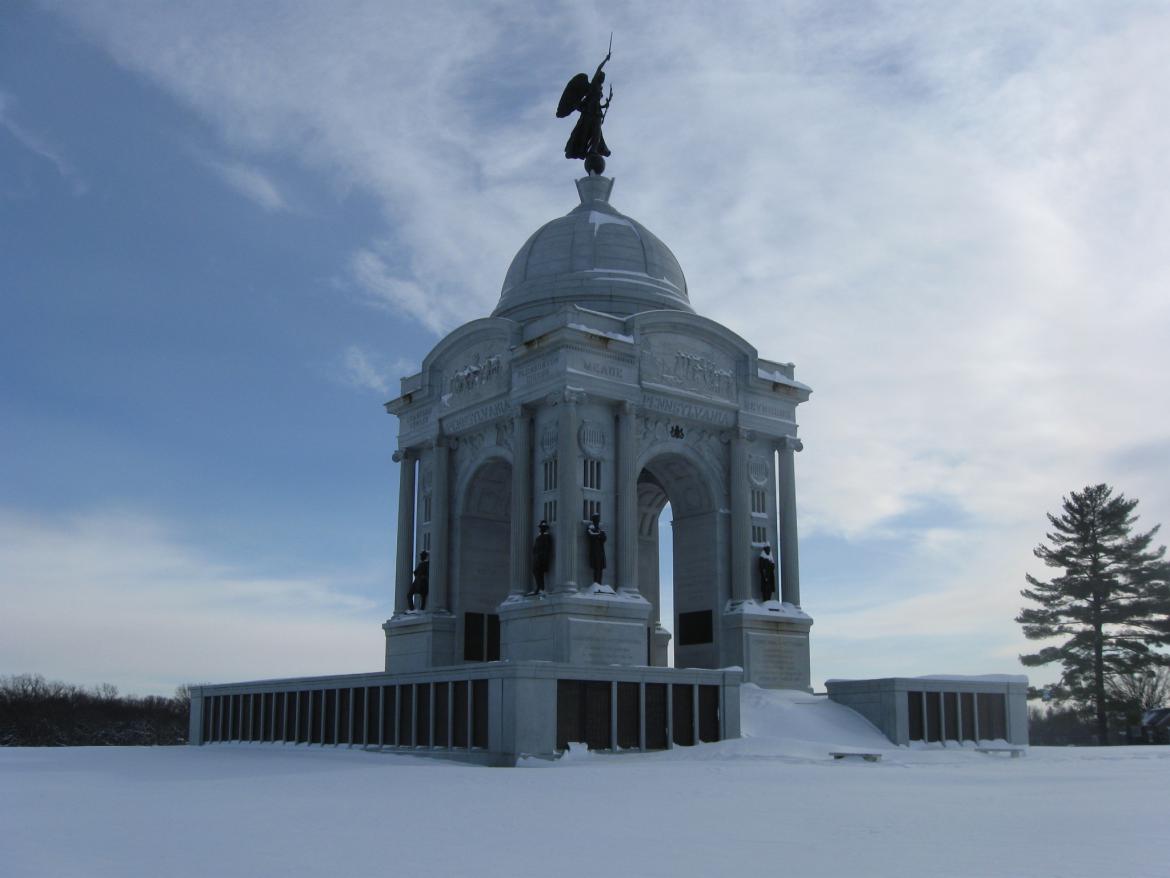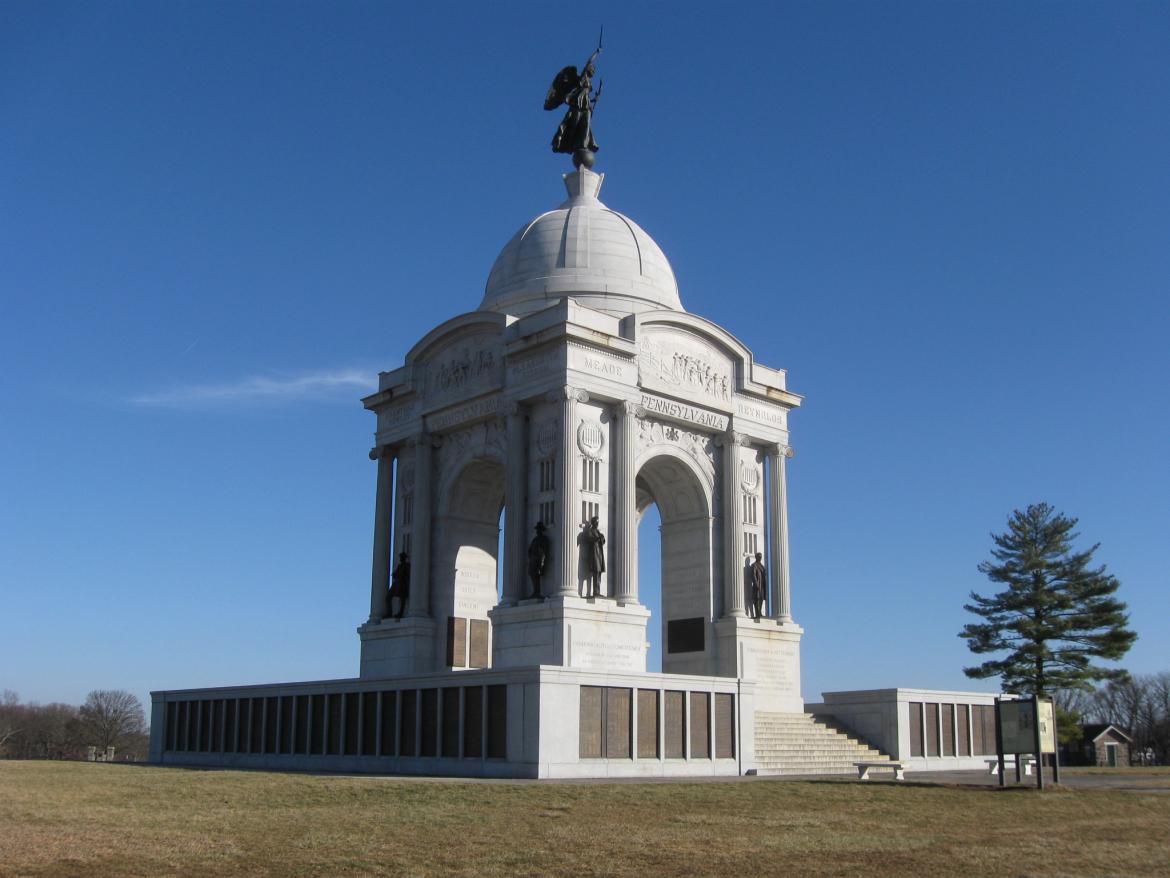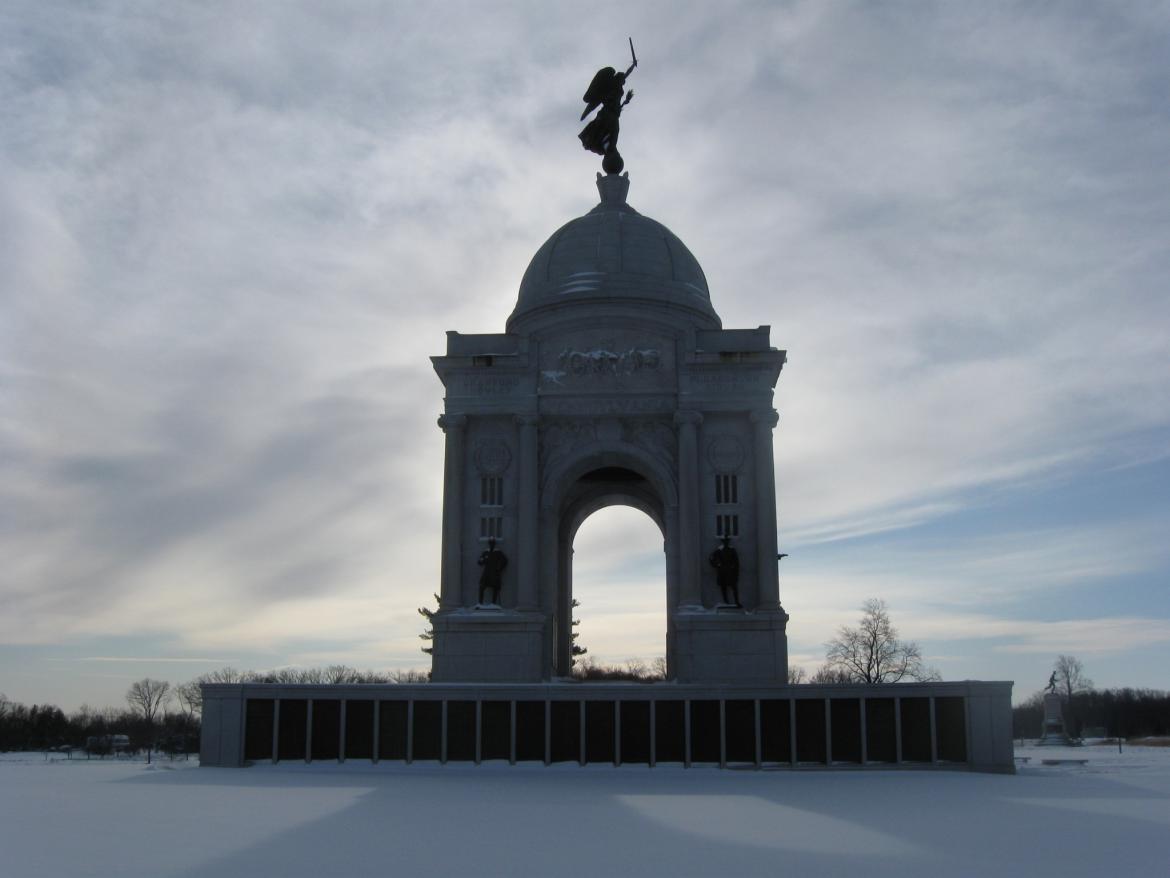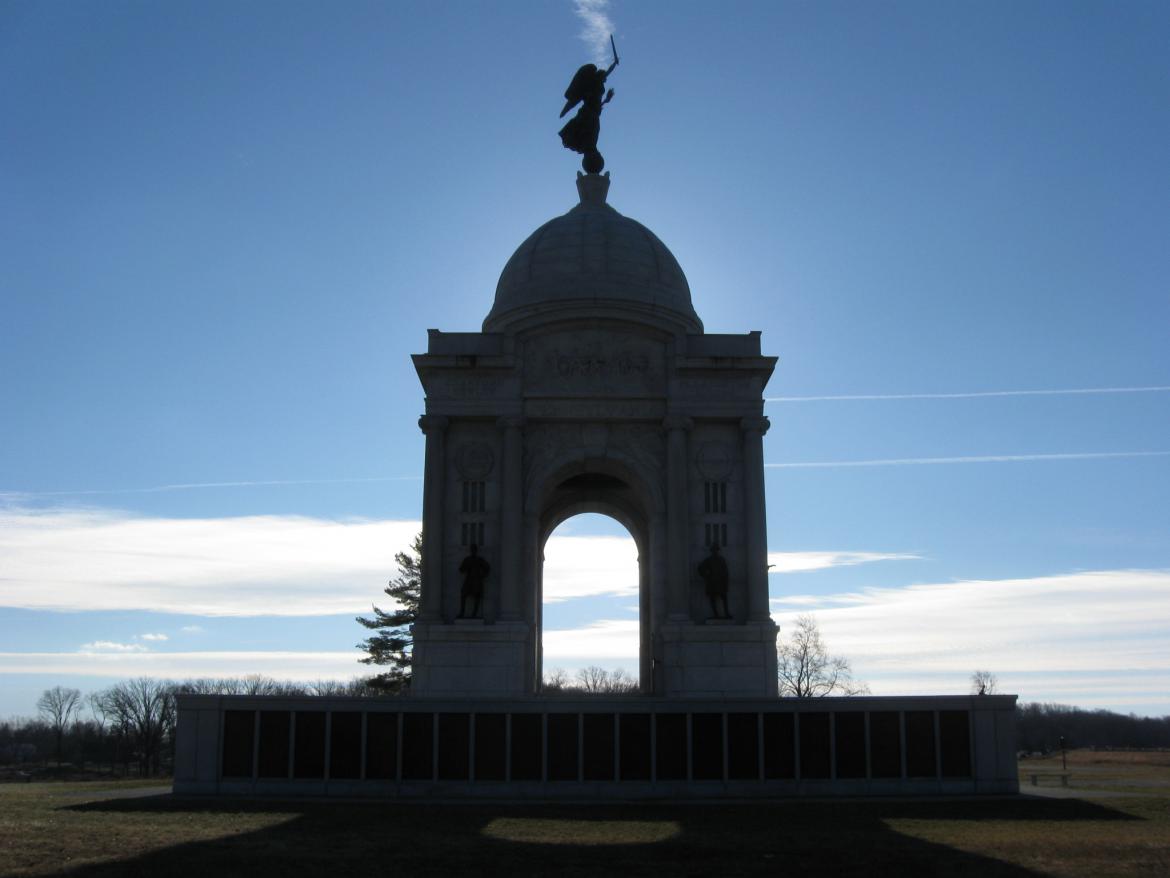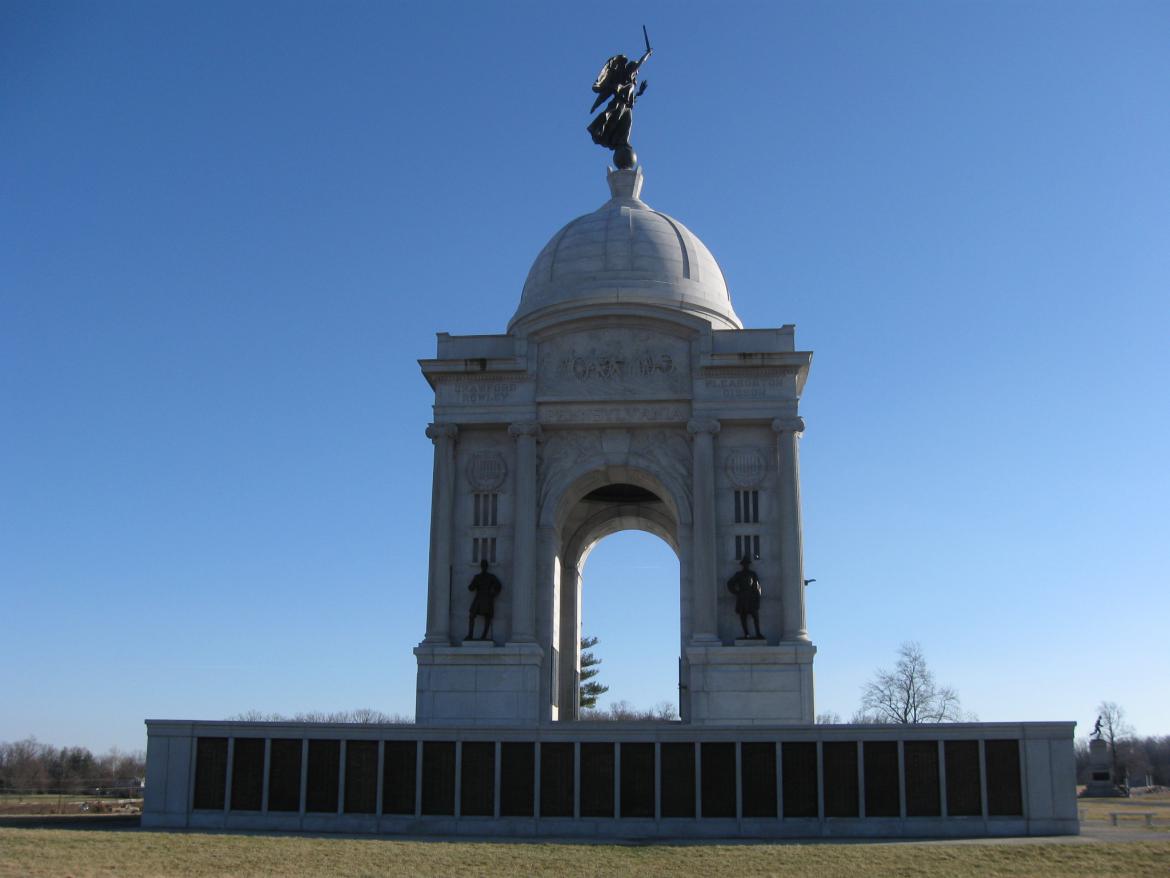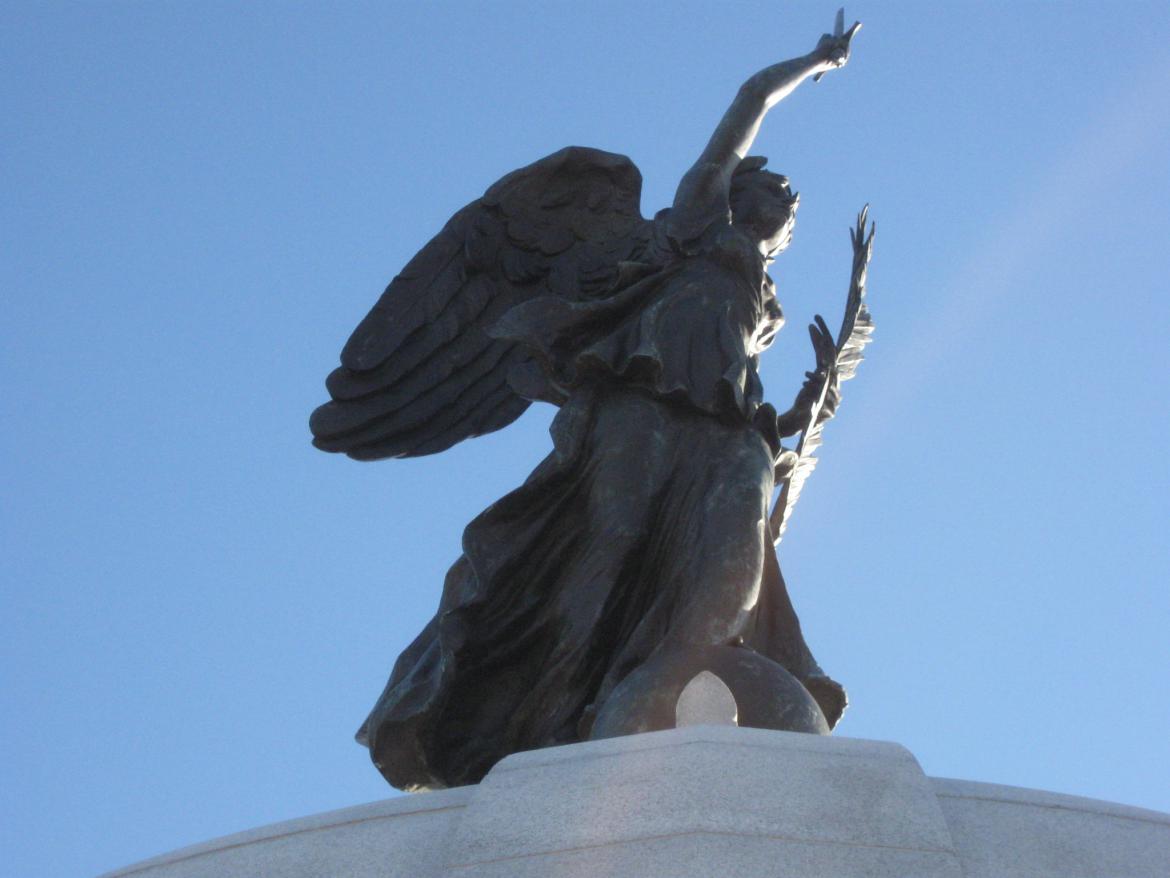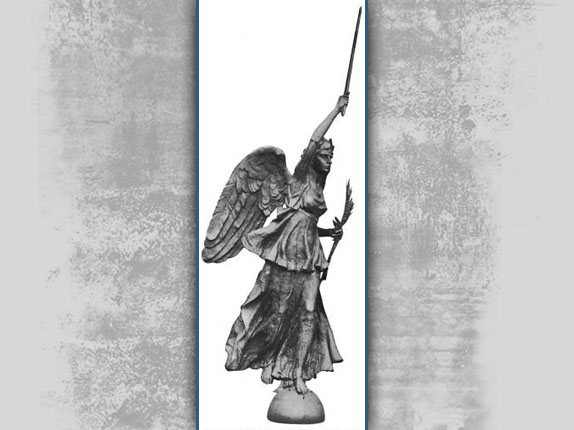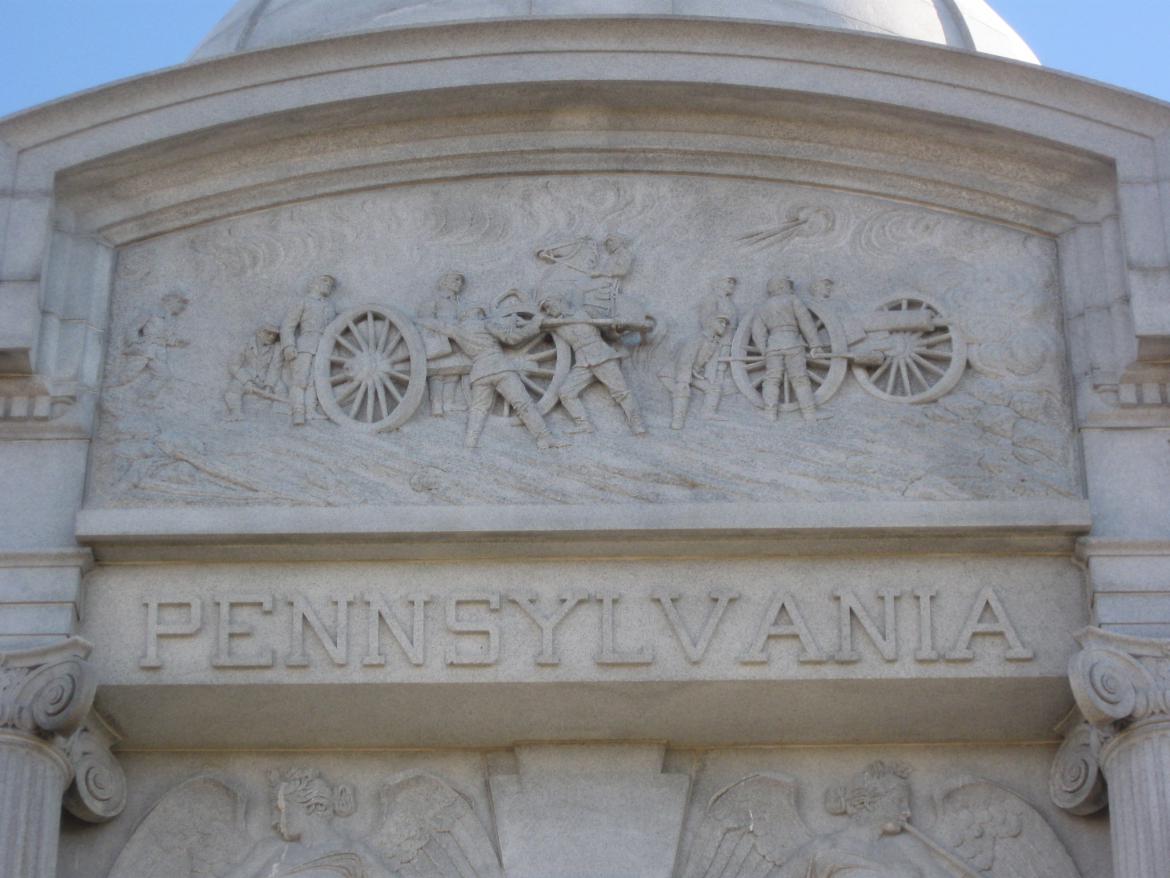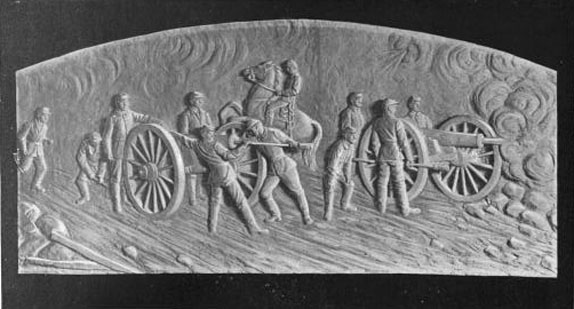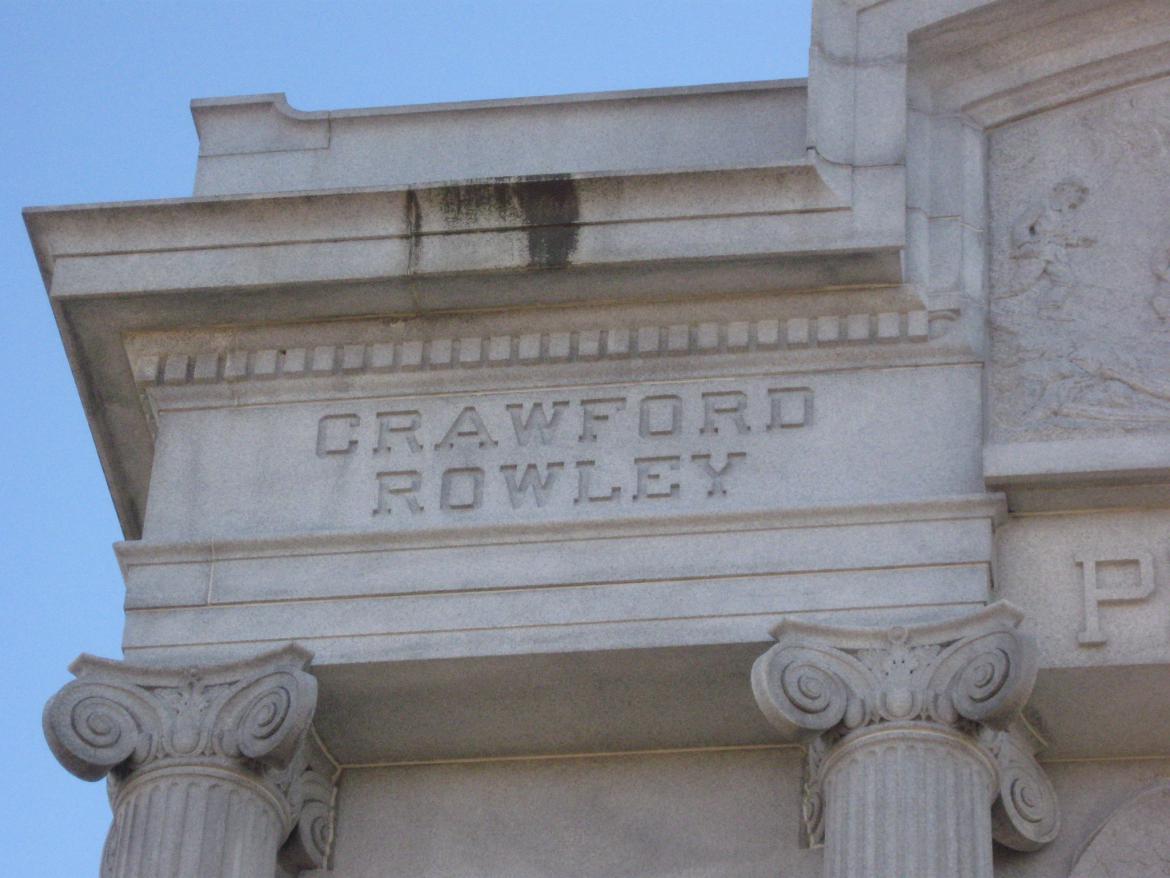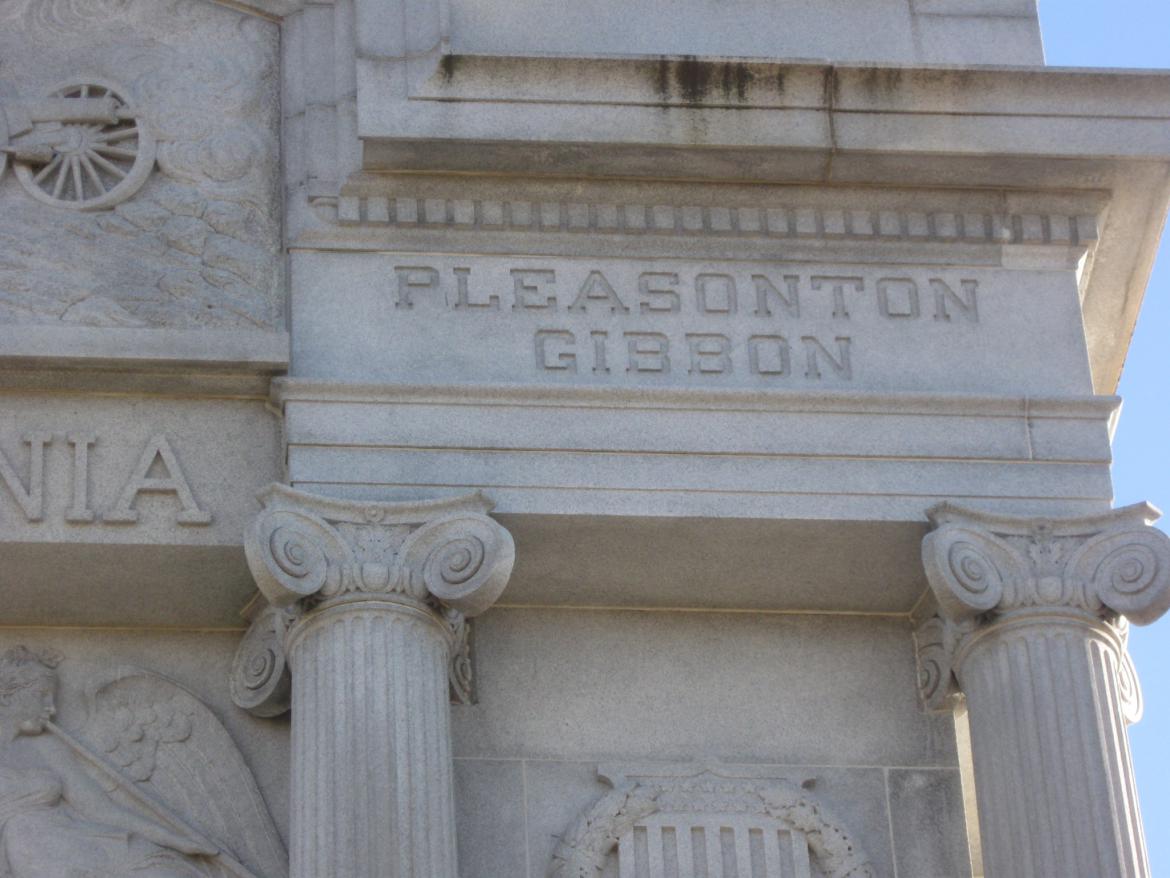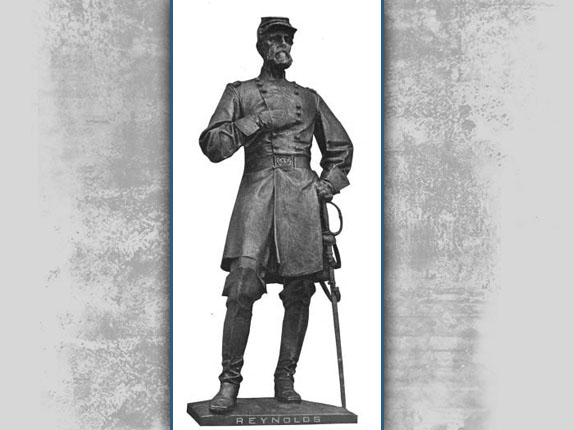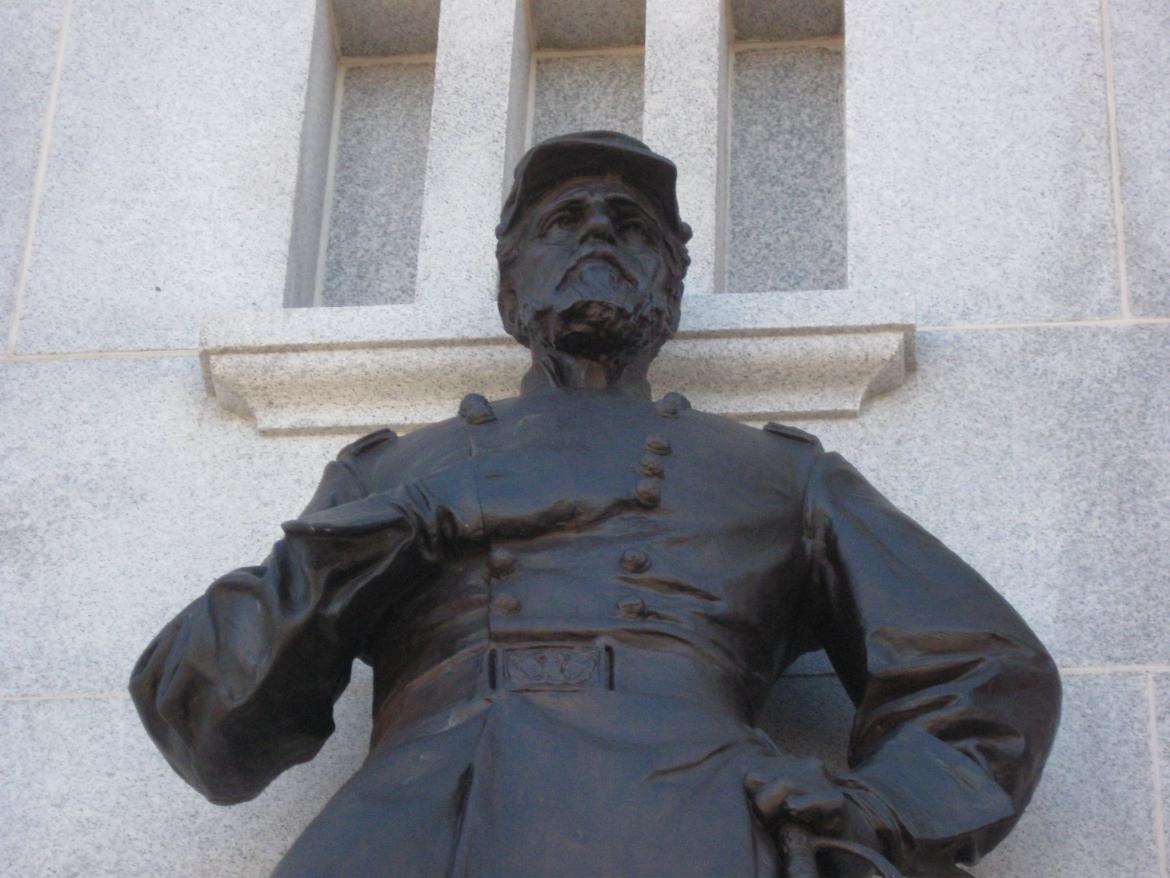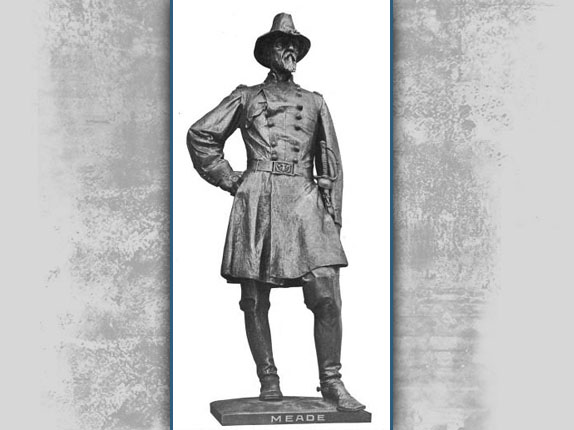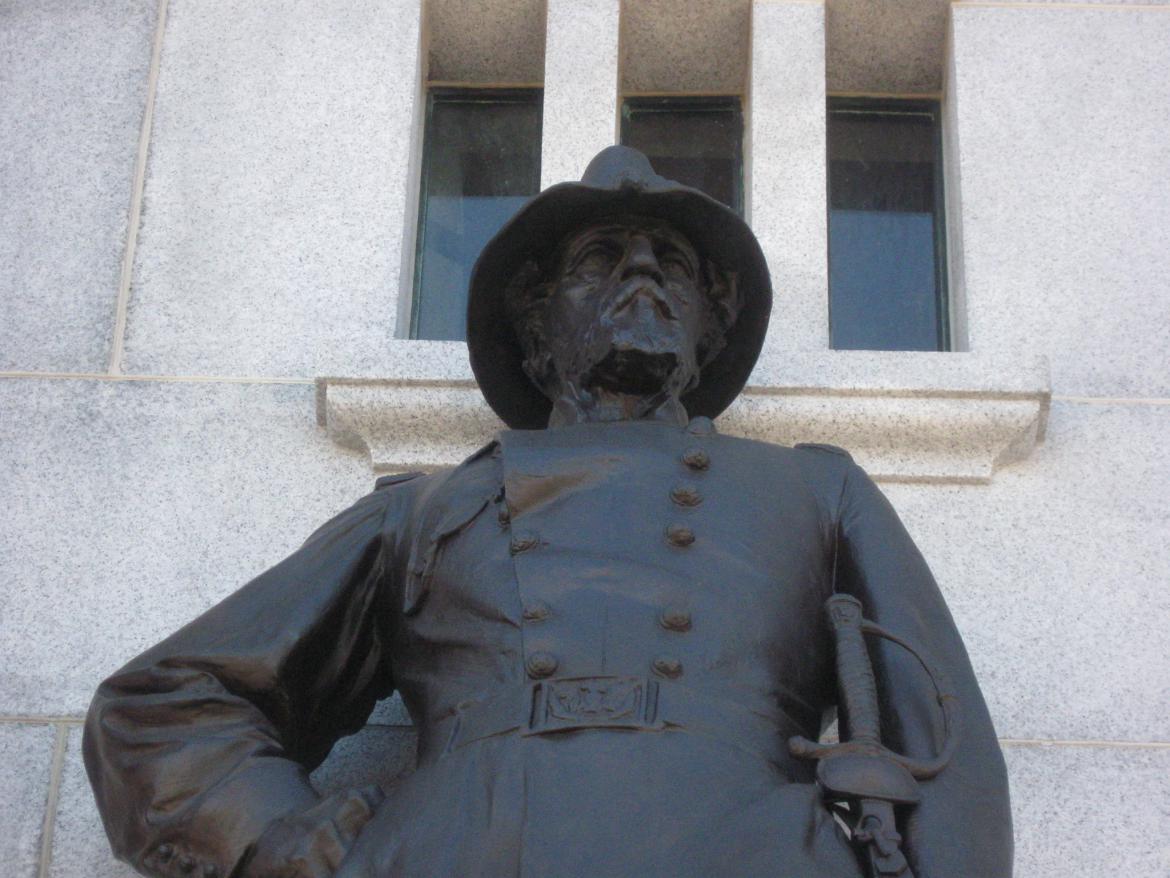We have taken more than a couple of pictures around Gettysburg the last two years, but we have yet to feature the Pennsylvania State Monument. Naively, we thought we could do an easy post showing the complete monument for New Year’s Day. However, with all the details on the monument, and as consumed that we sometimes are in showing you details, this could take a while. So we will begin our tour of the monument by showing some items on the north side.
This has nothing to do with the Pennsylvania monument, but 150 years ago today, on January 1, 1860, the staff of one of Gettysburg’s weekly newspapers, the Adams Sentinel, wrote their review of the year 1859.
The Sentinel was a Republican paper published by Robert Harper, who lived on the southeast quadrant of the Diamond, next to David Wills.
The review was a poem talking about a variety of subjects including:
The passing of the new year, lost love, Napoleon III’s fighting in Italy during the second war for Italian Independence, the Turks fighting the Russians, John Brown’s raid of the previous October, President James Buchanan (“Buck”), and Gettysburg soon to acquire gas lamps. For what it’s worth:
CARRIER’S ADDRESS
TO THE PATRONS OF
“THE ADAMS SENTINEL,”
Jan. 1st., 1860
KIND PATRONS with our annual greeting,
We hail you to a joyous meeting,
We wish you mirth and gladness;
To quaff the flowing cup of joy,
To taste of bliss without alloy,
Or tinge of gloom and sadness.
The Old year on its rushing pinions,
Swept swiftly over Time’s dominions,
Then with a pall of gloom,
Amongst the dying and the dead,
And hopes and joys forever fled,
Drooped in the murky tomb.
Methought, I saw the Old year come,
Encloaked in thoughts of doubt and gloom,
To form his lonely mansion,
Where he may quietly repose,
And wipe his eyes because he knows
That he is out of fashion.
Then whilst he viewed his funeral train,
Discordant visions reached his brain
Of hope, and fear, and passion;
He thought of moments mis-improved,
Then how his moody soul was moved
By a dread apparition.
Of all the time that he had wasted,
Of all the pleasure he had tasted,
When young and brisk and gay;
He thought of many a bout and spree,
Chock full of frolic, fun, and glee;
But all was passed away.
The old year had not done lamenting,
When, all propriety forgetting,
The New Year rushed along:
“All hail!”ed him with a joyous shout,
As if St. Nick was still about,
And with a gladsome song.
And now the old year with affright,
Fled in the darkness of the night,
The last night of December;
Into his lone and dreary tomb,
Where scarce was flickering in the gloom
A pale and dying ember.
The New Year promised to the boys,
A sweet-heart’s kiss and other joys;
And also plenty of beaux,
To every charming maiden fair,
With sparkling eyes and golden hair,
And lips the tint of rose.
But Oh! what record hast thou borne
Of hope, and fear, and love, and scorn,
To the eternal bar?
For thou hast heard the widow’s wail,
Transported by the Southern gale,
To Northern lands afar;
And thou has seen Italia’s plain
Where waving fields of ripening grain,
And Scio’s luscious vine,
Are mingled in the fairy view,
With summer’s green and golden hue,
And scenery divine,
Cursed by the bloody scourge of War,
Whilst, like a red and fiery star,
O’er vales of living green,
Napoleon’s bannered flag was borne,
And echoed on the breath of morn
That trumpet’s pealing twang.
Italian Liberty the cry,
As o’er the Lombard’s plains they fly,
A serried wall of steel;
Alas! what would Italia expect
From him who rose on Freedom’s wreck,
Than heavier chains to feel?
But tyrants on their gilded thrones,
Supported by the bleaching bones
Of Freedom’s brave defenders.
Know there’s an age of strife and storm,
When there shall rise from Freedom’s form
A thousand dread avengers;
That then shall cease the reign of night,
Which long has triumphed over right;
God grant to haste the day,
When tyrants on their thrones shall shake,
And tyrannies shall feel and quake,
And Freedom bear the sway.
And Turks along the golden Horn,
For sitting in the blushing morn,
To read Mohammed’s lore,
Do nothing but protest and swear,
That the much talked of Russian bear
Is an egregious bore.
But in our country all’s as dry,
As lemonade without a fly,
To use a social term,
Except a little fighting muss
And any quantity of fuss,
By Old John Brown and firm.
Old John determined it was best,
To leave the regions of the West
And try a Southern land:
He had some twenty warriors brave,
To fight the battles of the slave,
A mongrel band.
For they were white and black and brown,
And John himself of great renown,
The captain of the host;
But Old Virginia rose in might,
To pour her legions to the fight,
Or else give up the ghost.
Death to the foeman was the cry,
But ‘ere old John had time to fly
The threatening storm,
It burst in fury on his head,
Whilst all around his warriors dead
Lay by his prostrate form.
His name shall live when he is dead
And pillows low his mouldering head,
As one of great renown,
Who, stirring for to free the slave.
Although so radiant and so brave,
Was done up brown.
Election day has come and gone
And Cupid still is playing on,
Still Lymon’s torch is lighted;
And Senor Oveido has led to his bower,
Where pearls and rubies fall in a shower,
To be in love united.
A Lady, who in silk is laced.
With gold, according to her taste,
All by her lover given;
But though she now is young and gay,
She’ll wish before she’s half the way,
That she was safe in heaven.
Democracy has tumbled down.
Has met the fate of old John Brown
Before the people’s voice:
Old Buck is standing all alone,
And heaves forth now and then a groan,
Unable to rejoice.
Gettysburg and its maidens fair
With black and red and yellow hair,
Is the last theme I sing:
Upon their charms I will not dwell,
Nor of their many virtues tell,
‘Tis far too grand a theme.
Our fame is spreading far and wide,
Our town is praised on every side,
As quite sublime.
Soon we shall see the lamp posts rise,
And draw the lightning from the skies
To write a line.
And now, dear friends, our song is ended,
It might be worse, and might be mended:
What’s that to you or I?
Just buy a song and plank the cash,
Then you may call it stuff and trash,
Until you come to die.
THE CARRIER1
1Adams Sentinel, Monday January 9, 1860, page 1, columns 2 and 3

